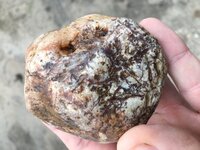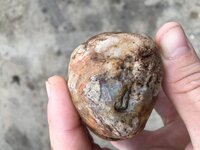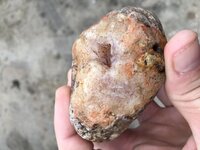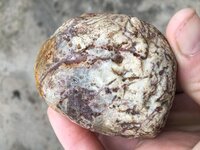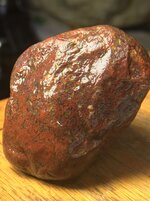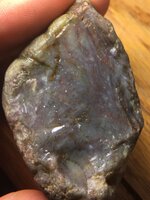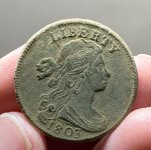I found this the other day while looking in a pile of rock. The reddish inclusions with White banding look like this might be a Moss Agate but I am unsure. There is a section that is clearly quartz with a light purple tint to it but I am wondering what the rest of the body is. Any help would be appreciated. Found in Central Minnesota.
